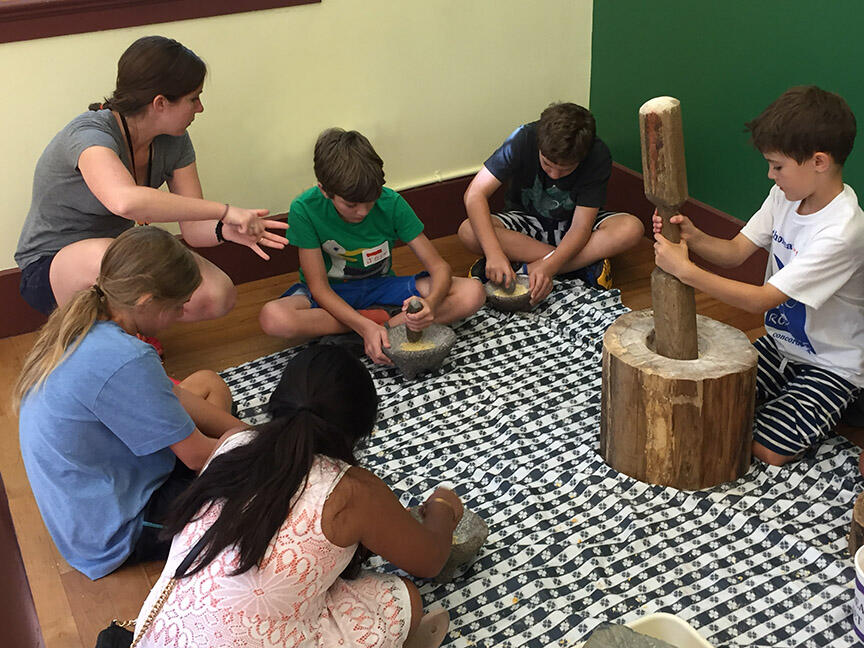Grades 6–8, 70 Minutes
"Strong hands-on experiences. A mix of active and observation. Great prep kits!"
—6th Grade, Vassal Lane Upper School, Cambridge MA
Integrates with studies of
- Ancient civilizations
- Archaeology as a historical process
Program Description
Available in person with a maximum of 25 students.
The program is a four-lesson unit set during the Neolithic period that uses primary sources to compare nomadic hunting and gathering peoples to sedentary farming peoples. Classroom teachers use the chart and map worksheets to introduce the impact climate change had on food resources. Students then examine artifacts from a mock dig to determine whether foragers or farmers were in residence. The kit is picked up from the museum and returned at the time of the field trip. The museum visit introduces displays of Shoshone, Ute and Salish peoples and those from South or Central American societies to identify common characteristics of both foraging and farming groups. Students experiment with stone tools, grinding utensils, and weaving to learn more about early Neolithic activities and understand what evidence remains after 10,000 years for historians to research. Students return to school with more information to fine tune their hypotheses about the people represented in the mock dig.
The class takes place in the Change and Continuity: Hall of the North American Indian gallery, the Encounters in the Americas gallery, and a workshop room.
Related Resources
- Free Teacher Guide contains lesson plan, glossary, all student worksheets, and answer key.
- Mock dig kit includes samples for careful touching and samples in test tubes for “looking only” of wood ash, legumes, charred legumes, impressions in clay of woven material, stone flakes, shells, beads, animal bones.
- Teacher Resources
